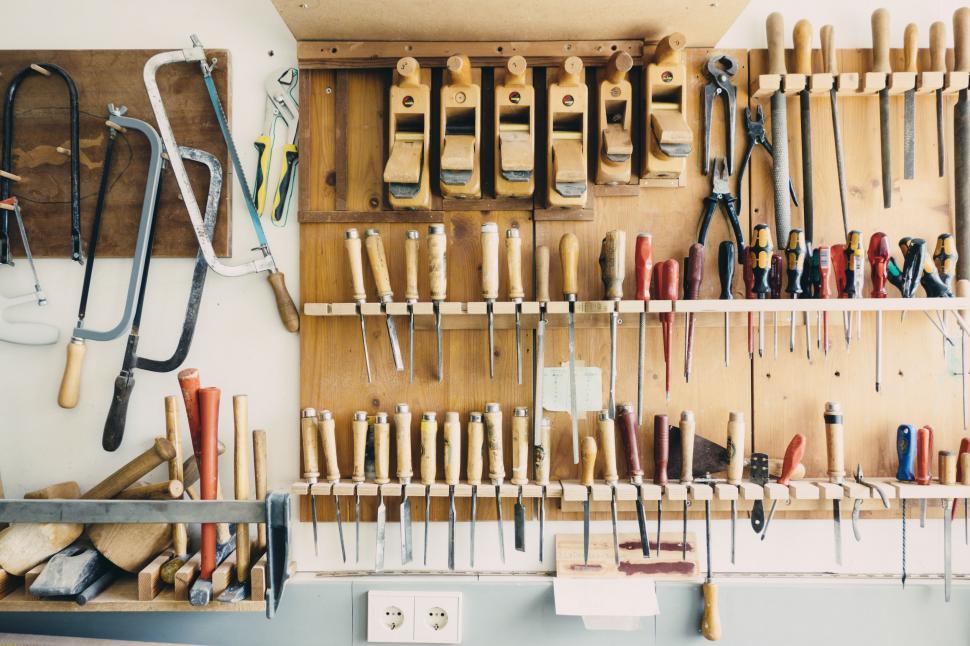Transform your plastering game with the right professional plastering tools – discover the essential equipment that separates amateurs from masters.
Core Plastering Tools: The Foundation of Quality Work
Professional plastering demands precision, skill, and most importantly, the right tools. As experienced plasterers serving Kent and the surrounding areas, we’ve learned that quality tools are not just equipment – they’re investments in excellence. The foundation of any professional plasterer’s toolkit comprises several essential items that work in harmony to deliver that perfect finish our clients expect. Recent industry surveys show that 87% of professional plasterers consider their core tools the most critical investment in their business.
The Plastering Trowel: Your Most Important Investment
The plastering trowel is undoubtedly the cornerstone of any plasterer’s toolkit. When selecting a trowel, consider these critical factors:
- Material Quality: Premium stainless steel offers the best durability and finish
- Size Range: 11-inch to 14-inch trowels are standard, with 13-inch being most versatile
- Blade Flexibility: Different flexibilities suit various plaster types and techniques
- Handle Ergonomics: Comfort is crucial for long-term use and precision
- Brand Reputation: Invest in recognised brands like Marshalltown or NELA
According to recent market research, professional plasterers typically invest £50-£100 in their primary trowel, considering it the most crucial tool in their arsenal.
Hawk and Float Combinations: Mastering Material Control
The synergy between your hawk and float is essential for efficient material handling and application. A well-balanced hawk allows for comfortable material holding, while the right float ensures smooth application and finishing. For optimal results, we recommend:
- Lightweight aluminium hawks for reduced arm fatigue
- 13-inch by 13-inch hawk size for balanced material capacity
- Plastic or wooden floats for different finishing techniques
- Speciality floats for specific textures and effects
Mixing and Preparation Equipment
Proper mixing equipment is crucial for achieving consistent plaster quality. Modern plastering practices have evolved, with 73% of professionals now using power mixing tools for better efficiency and consistency. The right preparation tools ensure your material meets exact specifications every time, leading to superior results and satisfied clients.
Mixing Buckets and Drill Attachments
Essential mixing equipment includes:
- Heavy-duty mixing buckets (20-30 litre capacity)
- Professional-grade mixing paddles
- Powerful drill (minimum 850W) with variable speed control
- Clean water vessels for precise measurements
- Measuring jugs for accurate water-to-plaster ratios
Measuring and Cutting Tools
Precision in measurement and cutting ensures professional results. Key tools include:
- 6-foot aluminium straight edge for checking surfaces
- Steel feather edge for crisp corners and joints
- Professional-grade snips for beading and mesh
- Laser level for perfect alignment
- Measuring tape and marking tools
Surface Preparation and Finishing Tools
Surface preparation can make or break a plastering job. Statistics show that 65% of plastering failures are due to inadequate surface preparation. Professional results require thorough preparation and the right finishing tools to achieve that perfect, smooth finish our clients expect.
Scarifiers and Surface Preparation Equipment
For optimal substrate preparation, essential tools include:
- Diamond-tipped scarifiers for concrete surfaces
- Wire brushes for removing loose material
- Bonding agents and PVA applicators
- Surface cleaners and degreasers
- Protective sheeting and masking materials
Essential Cleaning and Maintenance Tools
Maintaining clean tools is crucial for longevity and professional results. Your cleaning kit should include:
- Stiff-bristled brushes for tool cleaning
- Spray bottles for keeping edges workable
- Sponges and cleaning cloths
- Bucket scrapers and cleaning solutions
- Tool oil for protection and maintenance
Building Your Professional Tool Kit
Investment in quality tools pays dividends in the long run. Market research indicates that professional plasterers who invest in premium tools report 40% fewer replacements over a five-year period. While building your kit requires significant initial investment, the return in terms of work quality and efficiency makes it worthwhile.
Quality vs Cost: Making Smart Investments
When building your professional toolkit, consider these investment priorities:
- Primary tools (trowels, hawks) – invest in premium quality
- Secondary tools (floats, edges) – mid-range options suffice
- Consumables (buckets, brushes) – standard quality is acceptable
- Power tools (drills, mixers) – invest in reliability and power
Tool Care and Maintenance
Proper maintenance extends tool life and ensures consistent performance. Essential maintenance practices include:
- Daily cleaning of all tools after use
- Regular inspection for wear and damage
- Proper storage in dry conditions
- Periodic maintenance of power tools
- Replacement of worn components before failure
Professional Tips and Recommendations
As experienced plasterers in Kent, we’ve learned that success lies in both the quality of your tools and how you use them. Regular maintenance can extend tool life by up to 300%, while proper technique ensures consistent results. Remember to regularly assess your toolkit, upgrade when necessary, and always prioritise quality for tools that directly impact finish quality. Whether you’re serving residential clients in Tunbridge Wells or commercial projects in Bromley, having the right tools – and maintaining them properly – is essential for delivering the professional results our clients expect.
FAQ
What not to do when plastering?
Not allowing adequate drying time Plaster needs enough time to dry between coats. If a first coat is too wet, adding a second coat can cause issues like blistering or cracking. Plaster that is too thick can take even longer to dry. Thicker layers hold more moisture, which can affect the bond between coats.
What is the bull mark for plastering?
Plastering thickness is marked by the Bull marks. For internal plastering 12 to 15 mm will be the average thickness. Plaster thickness, Plump, wall lines & right angles are considered while fixing Bull marks. Bench mark is the point on the ground whose reduced level is known to us.
What is a plastering rule?
The Plastering Rule is designed to increase and enhance quality of finish. There is an aluminium handle and semi-flexible plastic blade for flattening, finishing and ruling off. It is compatible with all gypsum based plasters, traditional sand & cement renders and insulated rendering systems.
Is DIY plastering easy?
Plastering is a job that even the most confident of DIYers will steer clear of. However, with some preparation, patience and know how, you can plaster your own walls and achieve a smooth, professional finish.
Sources
[1] https://www.gypsumtools.com/blog/the-top-10-plastering-tools/
[2] https://marshalltown.com/pro-3937-plastering-trowels
[3] https://www.screwfix.com/c/tools/plastering-tools/cat831284

